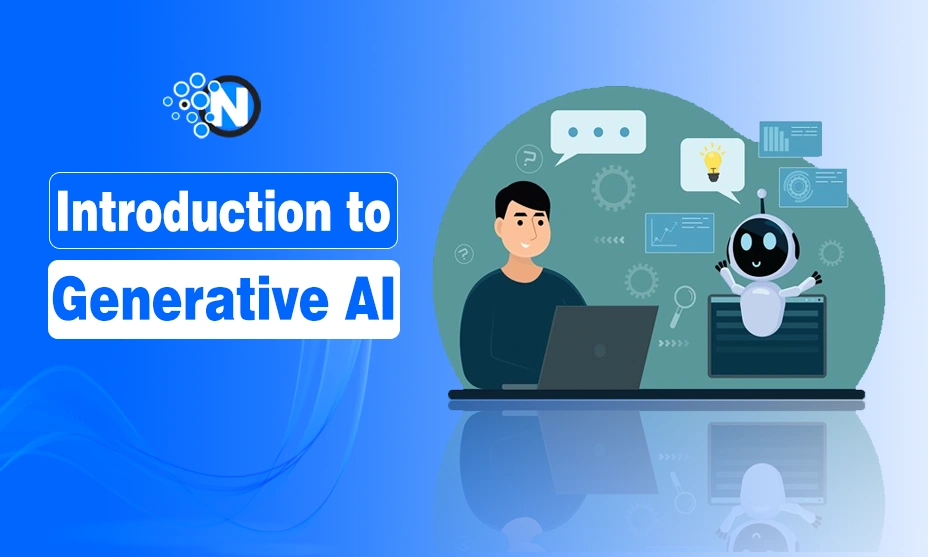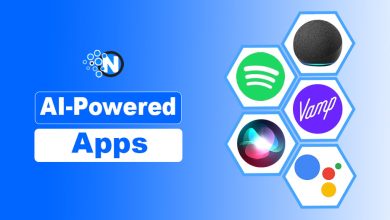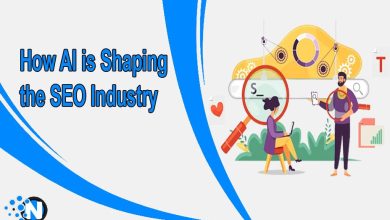Introduction to Generative AI – A Beginner’s Guide
The fascinating topic of Generative AI has received much interest in the rapidly developing science of artificial intelligence (AI). This innovative branch of AI empowers machines to exhibit creativity, imagination, and the ability to produce original content.
There are some major participants in the field of generative AI at the moment, and the open-source community has been at the forefront of the subject’s rapid evolution in recent years. It is redefining the boundaries of human-machine interaction, from generating lifelike images and realistic text to composing music and even crafting entirely new ideas.
Generative AI Definition
The term “Generative AI” is used to describe a subset of AI algorithms and models whose goal is to produce new data that closely matches patterns seen in the data they were trained on.
It is an area of AI that aims to teach computers to produce material that is indistinguishable from that produced by humans.
This AI uses algorithms like Generative Adversarial Networks (GANs) and Variational Autoencoders (VAEs) to generate original natural-sounding content instead of classic AI systems’ rule- and pattern-based approaches.
The Role of GANs and VAEs
Generative Adversarial Networks (GANs) and Variational Autoencoders (VAEs) are two prominent techniques within Generative AI the generator and the discriminator are neural networks in GANs.
The generator creates data instances, and the discriminator determines their veracity. GANs constantly interact to improve their results, producing ever more persuasive material.
In contrast, Variational Autoencoders (VAEs) encode data into a lower-dimensional space before decoding it back into its original format. By going through this procedure, we increase the likelihood that the model will acquire accurate data representations, making it a powerful instrument capable of producing varied and consistent results.
Applications of Generative AI
Applications of generative AI are widespread, bringing about structural changes in many sectors and opening up exciting new avenues of research.
- It aids in the production of beautiful images and complicated patterns in the area of art and design.
- It creates artificial medical pictures in medicine, improving diagnoses’ precision.
- Natural language processing relies heavily on generative AI since it may generate content that is difficult to distinguish from human-written work and can even help with translation.
1. Creative Content Generation
Generative AI has changed the creative environment by providing support for traditionally creative fields like the arts, design, and writing. It may create original works of art, music, literature, and visual designs. These AI-generated works of art frequently shock and amaze, stimulating new levels of creative thought.
2. Healthcare Advancements
The healthcare industry has benefited greatly from generative AI’s use in areas like diagnosis, medication research, and individualized care plans. Images and patient records are only two examples of medical data types. It may examine to discover trends and make precise predictions. Furthermore, generative models may mimic the behavior of certain diseases, giving scientists insight into how to treat and prevent them.
3. Financial Modeling
The financial industry uses generative AI to create complex models for predicting the market, analyzing customer behavior, and assessing risk. These AI algorithms can help traders and investors make better selections by studying data and market trends in the past.
4. Gaming and Virtual Reality
Video games have benefited from generative AI since it has allowed developers to create more lifelike characters, settings, and gameplay elements. It also has the ability to change the game world in response to player input dynamically. Generally, It makes for a more interesting and exciting experience overall.
5. Natural Language Processing
The advancements in generative AI have greatly enhanced natural language processing. It results in the development of advanced chatbots, translation systems, and content-creation tools. Conversations with these language models driven by artificial intelligence feel more real and genuine.
Advantages of Generative AI
Here are some of the best advantages of Generative AI, that you can get after getting involved in it.
1. Enhanced Creativity:
Generative AI brings creativity by generating novel and diverse content, pushing the boundaries of traditional approaches.
- Efficiency and Speed: AI’s ability to generate content at a fast pace, tasks that might have taken humans several hours or even days can now be finished within a short period.
- Personalization: Generative AI permits highly tailored interactions by adapting material and experiences to each user’s unique tastes.
- Insights and Analysis: This technology allows for the extraction of useful information from large databases, which in turn leads to better business decisions and tactics.
2. Ethical Considerations
Generative AI has significant potential but also raises serious ethical concerns. Plagiarism, copyright violations, and concerns about the veracity of machine-generated work arise as a result. Finding a happy medium between technical progress and ethical duty is an ongoing problem.
3. Privacy and Security of Data Maintenance
Generative artificial intelligence systems require massive volumes of information to work properly. This information frequently contains private and intimate details about persons. Data privacy and security must be top priorities as we build new AI systems, with strict protections put in place to prevent abuse of user information.
4. Mitigating Bias and Discrimination
Data used by generative AI algorithms to learn from might unwittingly reflect societal prejudices. These prejudices can cause biased results, which in turn can reinforce prejudice and marginalization. We must actively endeavor to uncover and reduce such biases to guarantee fair and inclusive AI-generated content.
5. Transparency and Explainability
The distinction between human and machine creativity may easily be blurred in AI-generated material. It’s crucial to inform people when they engage with material produced by AI. Maintaining consumers’ trust in AI systems requires taking measures to ensure transparency and offering explanations whenever the technology is used.
Challenges and Future Prospects
Generative AI has much potential, but certain obstacles, such as privacy and ethical problems with the created material, remain to be overcome. Solving these problems is essential if we want to see Generative AI adopted widely and responsibly.
We may expect Generative AI to have an even bigger impact on numerous industries as artificial intelligence advances. It tends to spark new ideas and radically transform our day-to-day lives in ways of doing things.
Final Words
Significant progress in the field of artificial intelligence has been demonstrated through Generative AI. It has the potential to transform industries and reimagine human-machine collaboration due to its capacity to emulate creativity and generate original material.
As you explore the realm of Generative AI, you open yourself up to a universe of novel experiences and boundless opportunities. Without question, generative AI will catapult companies and people into a future of limitless innovation and extraordinary prospects.





